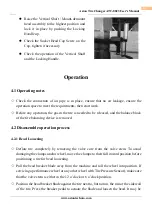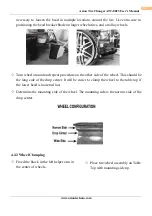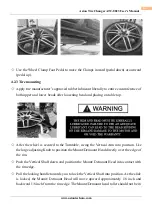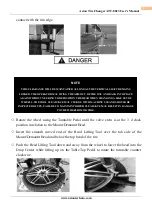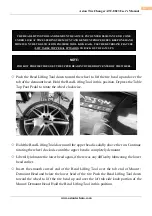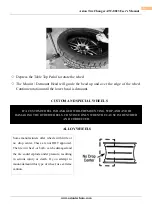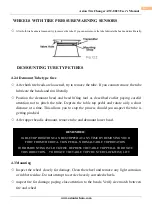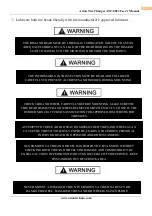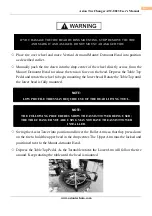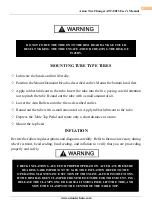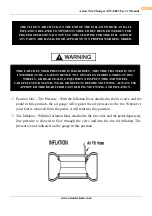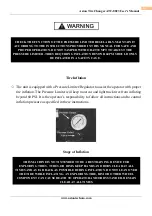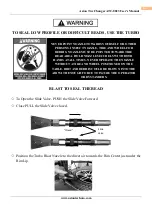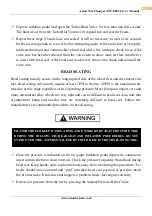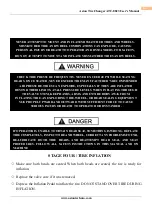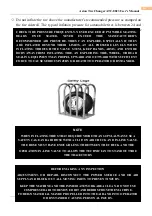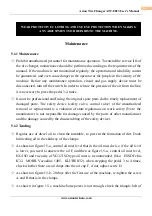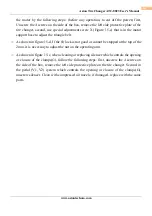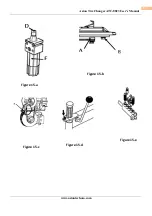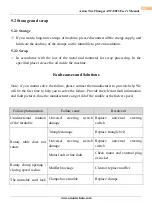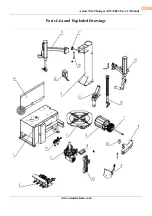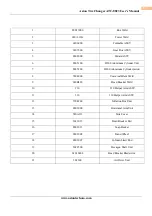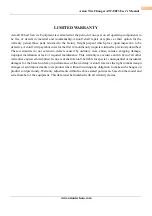
www.astontechusa.com
32
Aston Tire Changer ATC-8823 User’s Manual
◇
Depress inflation pedal and open the Turbo-Blast Valve for less than one full second.
The blast of air from the Turbo Blat Nozzle will expand tire and seal the beads.
◇
Repeat these steps if beads have not sealed. It will be necessary to wait a few seconds
for the air storage tank to recover before attempting again. If tire and wheel are properly
lubricated and operator cannot achieve bead seal after a few attempts, check to see if the
valve core has been be removed from the valve stem to allow more air flow into the tire
to assist with bead seal. After bead seal is achieved, remove the chuck and reinstall the
valve core.
BEAD SEATING
Bead seating usually occurs on the long-tapered side of the wheel first and the shorter side
last. Bead seating will usually require at least 7 PSI in the tire. 40 PSI is the maximum safe
pressure at this stage regardless of tire operating pressure. Most European import cars and
many aftermarket alloy wheels are very tight and can be difficult to bead seat. Also note that
asymmetrical hump and run-flat tires are extremely difficult to bead seat. Follow tire
manufacturer’s recommended procedure for bead seating.
◇
Once tire pressure is indicated on the air gauge (inflation pedal depressed, continue to
inject air into the tire in short intervals. Check the pressure frequently. Stand back during
bead seat. Keep hands, arms, and entire body away from tire during this procedure. Tire
beads should move outward and “pop” into their bead seat position as pressure inside
the tire increases. If this does not happen, a problem exists. Investigate carefully.
◇
Release air pressure from the tire by pressing the manual Pressure Relief Valve.
ERATOR SHOULD KEEP HANDS, ARMS, AND ENTIRE BODY AWAY FROM THE TIRE
DURING THE FOLLOW- ING BEAD SEAT AND INFLATION PROCEDURES. DO NOT
STAND OVER TIRE, AS PERSONAL INJURY COULD RESULT FROM INFLATING TIRE.

